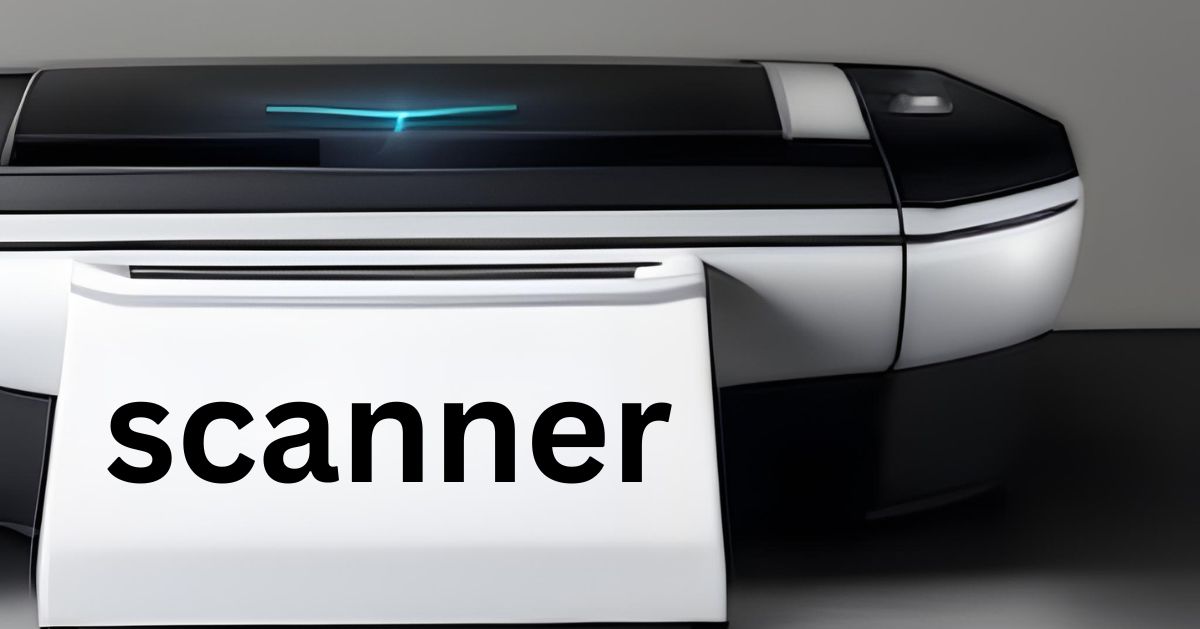Exploring Scanner: Uses, Types, and Advantages

The scanner history started in the 19th century with Alexander Bain’s “electric printing telegraph,” which scanned and reproduced handwritten messages. During the 1950s, drum scanners were introduced for specific image reproduction. The breakthrough came in the 1970s with CCD technology, leading to flatbed scanners. These became reasonable and were generally utilized for document digitization. The 21st century saw portable handheld scanners and integrated scanning on smartphones. Today, scanners convert the actual substance into computerized information, upgrading archives and data sharing productively.
What is a Scanner?
For computer editing and display, a scanner captures images from different sources, like photographic prints, posters, and magazine pages. It changes the document’s appearance into digital information through optical character recognition (OCR). Utilizing at least one sensor, the examining head captures the image as light or electrical charges. Depending on the scanner type, the physical document or the filtering head moves during the examination process. The scanner processes the image, making a computerized rendition that can be put away on a PC. Scanners commonly interface with a PC framework and accompanying programming applications for resizing and changing captured pictures. Whenever associated with a printer, you can print a second printed version and store it carefully.
[Also Read: Label Printer: Types, Features, and Choosing the Right Fit]
What Types of Scanners Are Available?
Modern scanners come in different types: handheld, feed-in, and flatbed, and they can scan black-and-white or color. Flatbed scanners, the most common type, scan documents placed on a flat surface, accommodating different sizes and being flexible. Sheetfed scanners process documents one at a time and are often used in home offices or small businesses. Handheld scanners, smaller than flatbeds, are for scanning on the go, like newspaper articles or photos. 3D scanners vary, catching distances and making direct estimations toward making virtual 3D items. Scanners are additionally found in devices like photocopiers, barcode scanners, and fax machines, utilized for document and image copies. Purchasers ought to consider image resolution needs when choosing a scanner.
[Also Read: What is a Computer and How Does it Work?]
What are The Different Types?
After setting up the scanner, just select a color or black and white scanning and identify if the document contains photos and text. Save the document to your computer or send it online. offer different plans, including programmed archive feeders, sheet-to-plate, flatbed, cameras, and handheld scanners.
Flatbed Scanners: These are the most common types found in homes and offices. They have a level glass surface on which documents or photos are placed for scanning. The user closes the cover over the thing, and the scanner catches the image by moving a sensor beneath the glass.
Sheet-fed Scanners: These are designed for high-volume tasks and are capable of processing multiple documents at once. They come with a feeder that automatically feeds the documents through the scanning process, making them ideal for rapidly scanning multiple pages or documents.
Handheld Scanners: As the name suggests, handhelds are portable devices that can be moved over the surface of a document, catching the substance as they go. They are especially helpful for digitizing small or irregularly shaped items and are suitable for on-the-go scanning.
3D Scanners: These are utilized to capture the shape and texture of objects, creating digital 3D models. They find applications in different fields, such as architecture, engineering, and 3D printing.
Drum Scanners: While not as common nowadays, drums were generally utilized in the past for excellent checking. They utilize a turning drum to scan the image optically, giving exact and point-by-point results.
Film Scanners: Film is explicitly designed for scanning visual film, slides, or negatives. These protect the quality and subtleties of simple film, making them favored by photographic artists and craftsmen.
Book Scanners: Books are particular devices used to digitize books and bound materials without harming them. They use particular lighting and camera frameworks to successfully catch the pages.
Portable and Wireless Scanners: With the increasing demand for mobility, versatile and wireless scanners have become famous. These devices allow users to scan documents straightforwardly from their smartphones or tablets, making scanning more accessible on the go.
Document Scanners: Document scanners are designed for fast scanning of bulk documents. They frequently highlight progressed programmed document feeder (ADF) and optical person acknowledgment (OCR) capacities, making them proficient in recording the executives.
[Also Read: What Office Equipment Should Your Company Have?]
What are The Major Advantages?
Using a scanner has different advantages, and current multifunction printers are outfitted with strong scanners, empowering document examination without the requirement for additional hardware. Besides, they are space-productive.
Cost Savings: By transforming physical files into advanced designs, scanners eliminate the requirement for paper-based documentation, lessening costs connected with paper, ink, and actual storerooms.
Efficient Utilization of Storage Space: Scanning documents takes into consideration digital storage, opening up office space that would in some way or another be occupied by huge file organizers.
Environmental Benefits: Less paper usage prompts decreased deforestation and a more modest biological impression, adding to ecological safeguarding.
Further Developed Information Security and Availability: Digital files can be encoded and secret phrases safeguarded, improving information security. Distributed storage and advanced information bases empower simple access to records from anywhere.
Enhanced Document Management: Digitized documents empower faster and more productive-looking documents, while OCR innovation changes overexamined text into editable and accessible arrangements.
Superior Image Quality: can catch high-goal pictures, making them ideal for businesses requiring accuracy, like designing and visual communication.
Ease of Use: Current and multifunction printers accompany instinctive points of interaction and programmed settings, making filtering simple for clients with fluctuating specialized mastery.
Consistent Combination with Advanced Stages: Scanned documents can be effectively moved to computers, cloud storage, email accounts, or online collaboration tools, facilitating smooth workflows, smooth work processes, and productive data sharing.
Conclusion:
Since you have a thorough comprehension of the different sorts accessible, go ahead and investigate our article on the Best Scanners for Your Home and Office Use. We have illustrated fundamental elements to guide you in picking the scanner that best suits your necessities.






